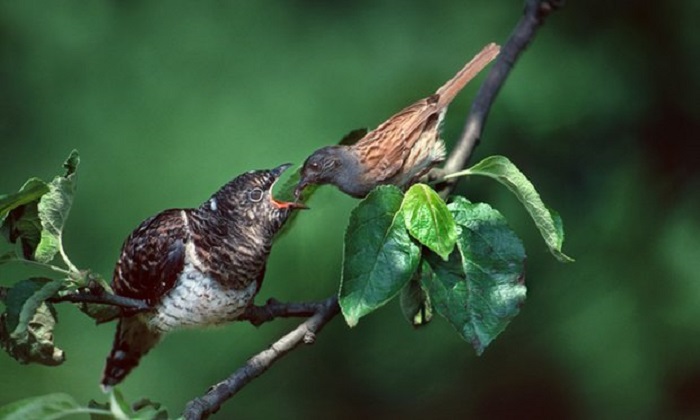It also warns of changes in the key seasonal interactions between species that could disrupt relationships between predators and prey and affect their breeding success and survival.
The study, led by Dr Stephen Thackeray from the Centre for Ecology and Hydrology in collaboration with 17 other organisations, analysed 10,003 long term phenological data sets of 812 of the UK’s marine, freshwater and land-based plant and animal species collected between 1960-2012 on everything from fish spawning to plant flowering.
The data was split into three levels of the food chain and spatially matched with local temperature and rainfall data, and models of seasonal timing and climatic variables, to show the variation in which species at different “trophic” levels are sensitive climate change.
“This is the largest study of the climatic sensitivity of UK plant and animal seasonal behaviour to date. Our results show the potential for climate change to disrupt the relationships between plants and animals, and now it is crucially important that we try to understand the consequences of these changes,” Thackeray said.
He said the findings highlighted the importance of managing ecosystems within a “safe operating space” that considered the likely impacts of projected climate change.
The study shows that seasonal events - including flowers blooming, leaves falling or animals hibernating - are generally more sensitive to temperature rises brought about by climate change than to changes in precipitation or snowfall.
But the “direction, magnitude and timing of climate sensitivity” varies significantly among species in different groups or levels of the food chain, the study showed.
Secondary consumers (such as predatory birds, fish and mammals) were consistently less sensitive to climate variations than species at the base of the chain (such as seed-eating birds and herbivorous insects), which were twice as sensitive to temperature.
Using estimates, the study predicted that by 2050, these primary consumers will have shifted their seasonal timing by more than twice as much as species at other levels of the food chain — an average of 6.2 days earlier compared to 2.5–2.9 days earlier.
Many long-term ecological changes have been attributed to climate change, and shifts in the seasonal timing of reproduction and migration have been well-documented. The most recent report from the Intergovernmental Panel on Climate Change (IPCC) found that in recent decades, many plant and animal species have moved their range, changed numbers or shifted their seasonal activities as a result of warmer temperatures.
The UK has a rich history of biological recording by scientists and “citizen scientists”, with data stretching to 1736 when Robert Marsham, the “founding father of phenology”, began recording the first signs of spring. Almost 50,000 people across the UK are now involved with the annual Nature’s Calendar survey, coordinated by the Woodland Trust, which provided the data the new study analysed.
Co-author Dr Deborah Hemming, from the Met Office, said: “By quantifying the relationships between these phenological records and climate data across the UK, we identify many phenological events that are extremely sensitive to climate variations. These provide ideal early indicators, or sentinels, for monitoring and responding to the impacts of climate variability and change on nature.”
Co-author Sian Atkinson, senior conservation advisor with the Woodland Trust, said: “This piece of research demonstrates how very valuable such records are in helping us to build a picture of the likely impacts of climate change for our wildlife.”
Species being disrupted by climate change
Early spider orchids and solitary miner bees
The solitary miner bee (Andrena nigroaenea) has been found to be more affected by climate change than the early spider orchid that it pollinates. Although both orchids and bees are both affected by temperature rises, they have a greater impact on the bees, the females of which emerge earlier, meaning that the males are less likely visit the orchids for pseudocopulation.
Oak buds and winter moths
Research has shown that an increase in spring temperatures without a decrease in the incidences of freezing spells in winter leads to poor synchronicity between the winter moth (Operophtera brumata) caterpillars and the oak tree (Quercus robur) buds on which they feed.
Cuckoos and their host species
While the common cuckoo (Cuculus canorus) has only advanced its migration slightly in response to earlier springs, many of its host species (the nests of which the cuckoo lays its eggs in) have begun to migrate much earlier, and are arriving at the breeding grounds well before the cuckoos.
More about:
















































